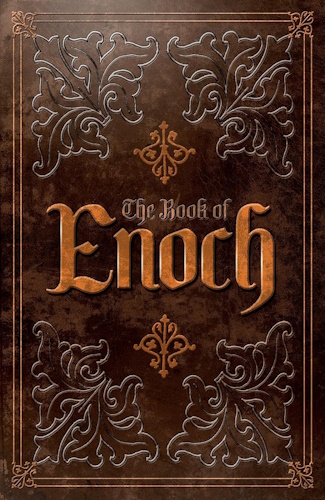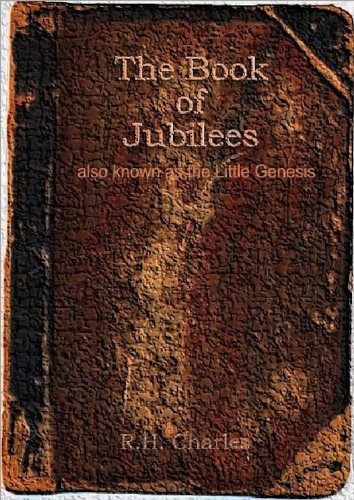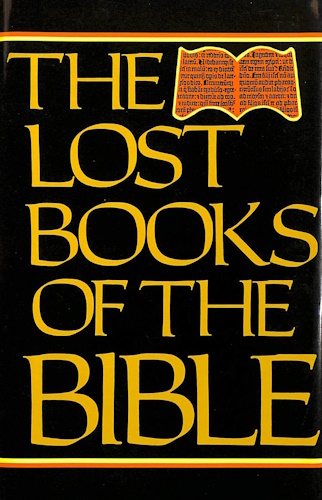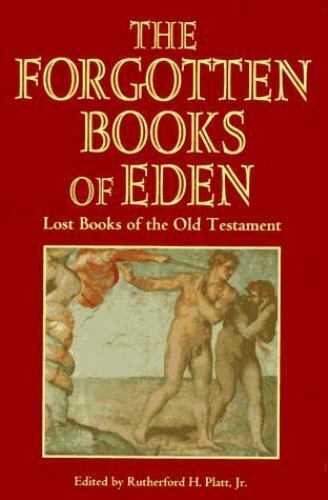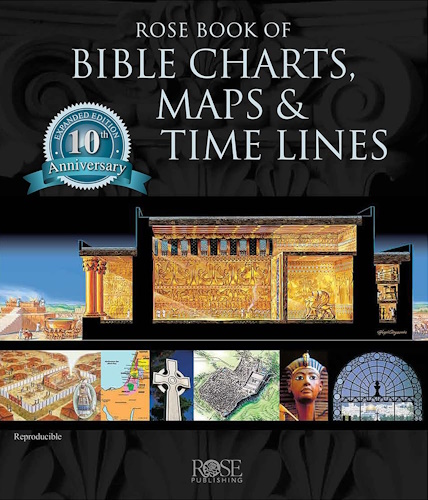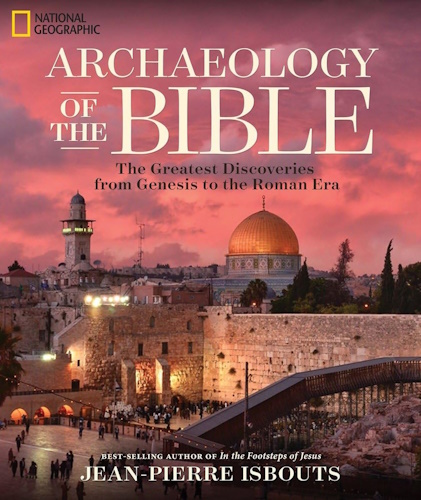
Introduction
The "Tales of the Patriarchs," which deals with the descendants of Adam, is sometimes referred to as the "Genesis Apocryphon." Originally, the Genesis Apocryphon was referred to as the fourth scroll because it was the fourth scroll out of seven to be found in the Qumran Cave. This "Dead Sea Scroll" was originally thought to have come from the apocryphal book of Enoch because a small portion of the scroll that had been unraveled, mentioned Enoch's name(Fitzmeyer, pg. 4). However, when another section was unraveled, scholars were lead to believe that this scroll came from the apocryphal book of Lamech, a name that was already known to scholars because of the book Jubilees. The reason why they thought this scroll came from the book of Lamech is because the speaker spoke about Bitenosh, Lamech's wife, in first person (Yadin, pg. 144). Yet once again, this belief was wrong. When the scroll was finally fully unraveled, it had references to Noah, Abraham and Lot, making the scrolls relation to the Jubilees more apparent. In many senses one can refer to this text as a "Little Genesis" because its literary dependence on Genesis is similar to that of the Jubilees (Fitzmeyer, pg. 4).
When Avigad and Yadin published the fourth scroll, they realized that they could no longer call it the "Book of Lamech" and so they decided on the title Genesis Apocryphon to avoid any further commitments to the character of the writing contained in the scroll. Avigad stated that "these stories are based on the biblical narratives but they also deal with other subjects and details previously unknown" (Fitzmeyer, pg. 5). An example of this is in of the story of Joseph and Sarah and their time in Egypt. In column 20 of the Apocryphon, the time duration of Sarah living with the Pharaoh is given as two years unlike the bible when a time frame was not given (Yadin, pg. 144). Also, the purity of Sarah which was in question in the bible is maintained in the Genesis Apocryphon. Sarah could not have relations with the Pharaoh because the evil spirit that Joseph prayed for to God made all the men in Egypt impotent. Thus, the purity of Adam descendants were maintained (WAC, pg. 74).
However, not all scholars agreed with this title Apocryphon because as R. Meyers believes, "it evokes its counterpart, a canonical book, and consequently introduces not the Qumran literature a slight anachronism." Yet, even with some criticism, the fourth scroll is known as the Genesis Apocryphon.
Now that the debate of naming this scroll was over, the task of placing this text into a genre began. It has already been stated that this text relies heavily on the canonical Genesis, however, this scroll contains additional details that were obviously derived from some non-biblical sources. For instance, Gn 5.28-29 in the bible is the starting point for the extended narrative for columns 2-5 which are embellishments of the birth of Noah. Columns 6-17 deals with Noah, the flood, and the division of the earth between his sons. These lines can once again be compared to the Jubilees chapters 4-9. In column 18 and 19 where the narrative has shifted to Abraham. This text is the expanded version corresponds with of Gn 11.27-14. There is an obvious similarity between the working of this section to the Jubilees. In column 22, a less direct translation can be seen, with the author reverting to the free reworking of the Genesis story which has been seen in previous columns, yet not returning to the first person except for conversation itself (Fitzmeyer, pg. 6).
Paraphrase
Frag.1 Col. 1
You should let your anger and tear out (?)... and who is the man who.. the fury of your anger..... and those who have been destroyed and killed, bereft and... and now I have stopped the prisoners.... the Great Holy One....all that he...
Frag.1 Col 2:
day of... all...land of... and the evil for...
Frag. 2
...and they were hit from behind...in front of the lord
Col. 1
.... and with the sowing....not even the mystery of evil which....the mystery which
Col. 2.1
I thought, in my heart, that the conception was the work of the Watchers the pregnancy of the Holy Ones and that it belonged to the Giants2... and my heart was upset by this... I, Lamech, turned to my wife Bitenosh and said... Swear to me by the Most High, Great Lord, King of the Universe3...the sons of heavens, that you will truthfully tell me everything, if... You will tell me without lies... Then Bitenosh, my wife spoke harshly and she cried... and said: Oh my brother and lord! Remember my pleasure... the time of love, gasping for breath. I will tell you everything truthfully... and then my heart began to ache... When Bitenosh realized my mood had changed...Then she withheld her anger and said to me: O my lord and brother! Remember my pleasure. I swear to you by the Great Holy One, the King of the heavens... That this seed, pregnancy, and planting of fruit comes from you and not a stranger, Watcher, or son of the heaven... Why is your expression changed and your spirit saddened... I speak honestly to you... Then I, Lamech, went to my father, Methuselah, and told him everything so that he would know the truth because he is well liked... and he is in well with the Holy Ones and they share everything with him. Methuselah went to Enoch to find the truth... he will. And he went to Parvaim, where Enoch lived... He said to Enoch: O my father and lord, to whom I... I tell you! Do not be angry because I came here to you... fear before you...
Col 3
For in the days of Jared, my father...4
Col 5
Enoch...not from the sons of heaven, but from Lamech your son... I now tell you... and I reveal to you... Go tell your son Lamech... When Methuselah heard this... And with his son Lamech, he spoke... Now when I, Lamech, heard these things... Which he got out of me
Col 65
I abstained from injustice and in the womb of my mother who conceived me I searched for truth. When I emerged from my mother's womb, I lived all my days in truth and walked in the path of eternal truth. And the Holy One was with me... on my pathways truth sped to warn me off the... of lie which led to darkness.. I braced my loins with the vision of truth and wisdom... paths of violence. vacat Then, I Noah became a man that clung to truth and seized... I took Amzara, his daughter as my wife. She conceived and bore me three sons and daughters. I Then took wives from my brother's family for my sons, and I gave my daughters to my nephews according to the law of the eternal precept which Most High ordained to the sons of man. vacat And in my days, when according to my reckoning... ten jubilees had been completed, the time came for my sons to take wives for themselves... heaven, I saw in a vision and was explained and made known the actions of the sons of heaven and... the heavens. Then I hid this mystery in my heart and explained it to no one. vacat... to me and a great and... and in a message of the Holy One... and he spoke to me in a vision and he stood before me... and the message of the Great Holy One called out to me: "To you they say, O' Noah,..." and I reckoned the whole conduct of the sons of the earth. I knew and explained everything... two weeks. then the blood which the Giants had spilled... I was at ease and waited until... the holy ones with the daughters of man... The I Noah, found grace, greatness and for my entire life I have behaved righteously...I, Noah, a man...
Col. 7
God told Noah that he would rule over the earth and the seas and all they encompass. Noah was overjoyed at the idea.
Col. 10
The arc rested upon the mountain of Ararat (Hurarat). Noah atoned for the land and burned incense on the alter6.
Col. 11
God makes a covenant with Noah telling him he could no longer eat blood of any kind.
Col. 12
I placed my bow in the cloud and it became a sign for me in the cloud... the earth... it was revealed to me in the mountains7... a vineyard in the mountains of Ararat... After the flood Noah and his sons descended from the mountain. They saw the widespread devastation of the earth. After the flood Noah's children began to have his grandchildren-Sons ands daughters8. They then planted the soil and put a vineyard on Mount Lubar that produced wine four years later: On the first day of the fifth year, there was a feast at which the first wine was drank. Noah gathered his family together and they went to the alter and thanked god for saving them from the destruction of the flood.
Col 139
...They were cutting gold, silver, stones, and clay and taking some for themselves. I saw the gold and silver... iron, and they cut down all the trees and took some. I saw the sun, moon, and stars cutting and taking some for themselves... I turned to see the olive tree and behold, it was rising up and for many hours... many leaves... appeared in them. I watched the olive tree and the abundance of its leaves... they tied to it. I was greatly amazed by the tree and its leaves... the four winds of heaven were strongly blowing and they were breaking off and smashing the branches of the olive tree. The westerly wind hit first, knocking off its fruit and leaves and scattering them everywhere. Then...
Col 14
...Listen and hear! You are the great cedar... standing in front of you in a dream on the mountain tops... truth. The willow that springs from it and rises high (these are) three sons... And the one that you did see, the first willow got attached to the stump of the cedar... and the wood from it... will never separate from you. And among it posterity... will be called... will grow a wonderful plant... will stand forever. And what you saw, the willow caught the stump... the last willow... part of their branch entered10 the branch of the first tree, two sons... And what you saw, that part of their branch entered the branch of the first tree... I explained to him the mystery...
Col 15
...And that you saw all of them... They will go around, the majority of them will be evil. and what you saw, that a man came from the south, with a sickle in his hand, and bringing fire with him... who will come from the south of the land... And they will put wickedness on the fire, a;;... And he should come between... Four angels... between all nations. And they will all worship and be dumbfounded... I will honestly explain to you. And I, Noah woke up from my sleep and the Sun11.
Col. 16
Noah divided the land among his decedents.... all the land of the north as far as... this boundary, the waters of the Mediterranean.... the Tina River.
Col. 17
Noah further divided the land West, to Asshur, as far as the Tigris. He gave Aram land as far as the source of.... this Mountain of the Bull, and he crossed it westward as far as.... where the three parts met.... For Arpachshad12... He gave Gomer13 a part in the northeast t the Tina River.... To Magog14...
Col. 19
I, Abraham built and alter (at Bethel) and called to god, praising him. I then went to the Holy mountain and to Hebron15 where he lived for two years. Because there was famine in the land my family and I traveled to Egypt where grain was plentiful. I went across the branches of the Nile16 to enter Egypt, the land of the sons of Ham. I had a dream about a cedar tree and a date-palm tree. When people came to cut down the cedar tree, the date-palm tree objected, saying that they were grown from a single root. The cedar tree was spared. I became fearful of the dream and told it to my wife. I explained it as it pertained to us telling Sarah that the men will come for her and try to kill me. I warned Sarah that she must tell everyone that I am her brother so that my life can be spared. She became scared and did not want to go to Zoan for fear of being seen. Five years later17, councilors of the Egyptians court and advisors of the Pharaoh of Zoan18 came, having heard the words of my wife. They brought gifts and requested knowledge from me. I read to them from the Book of the words of Enoch.
Col. 2019
The men return to the Pharaoh and describe Sarah's features: beautiful face, supple hair, lovely eyes, pleasant nose, radiant face20. He continued on describing her shapely breasts, perfect hands, and everything down to her long and delicate fingers. the men compared her to and rated her far higher than virgins and birds, and all other women alike. Hearing this, and then seeing Sarah, the pharaoh wanted her and took her for his wife. Sarah saved me by telling the pharaoh that I was her brother and that night I and my nephew Lot cried together I prayed to Lord for justice21. I wanted the Lord to raise up against the pharaoh and protect Sarah. God listened and sent an evil spirit to the entire household that prevented the pharaoh from having sexual relations with Sarah for the two years that they were together. At the end of the two years, the plagues and afflictions were so great that magicians and healers were sent for. They were, of course, ineffective, and they all soon left. Hyrcanos went to me pleading for help against the plague because I had been seen in a dream. I agreed to help only when my wife Sarah is returned to me. The pharaoh heard this and confronted me, himself asking why I lied saying that Sarah was my sister. He agreed to give Sarah back and I exorcised the evil spirit from the house of the pharaoh. The pharaoh swore to me that he had not touched Sarah while they were together and gave her gifts of gold, silver, linen, and purple-dyed clothing. Sarah and I were then led out of Egypt. I, Sarah, Lot, and his wife took our flocks and the gold and silver I had received22 and traveled together.
Col. 21
I went to all my old campsites until I reached Bethel, the place where I once built an alter, and then I built another one and offered up burnt offerings and a cereal offerings to the God Of Most High, and invoked the name of the Lord of the Universe there. I praised God's name and blessed god and gave thanks to Him there for all the flocks and goods and wealth which he has given me, for the good he has done for me, and because He had returned me to this land safely.
After this day, Lot left me on the account of our shepherd's behavior. He went to live in the Valley of Jordan taking all his flocks with him. And I also added greatly to what he had. he pastured his flock and kept moving until he reached Sodom23 and bought a house there, while I still lived in the mountain of Bethel. It bothered me that Lot and I had separated.
God came to me in a dream and said to me: Go up to Ramat Hazor24 which is north of Bethel, the place you are living now, and look to the east, west, south and to the north. Look at the land which I am giving you and your descendants forever. The next morning I went up to Ramat Hazor and looked at the land from that height, from the river of Egypt up to Lebanon and Senir25, and from the Great Sea up to Hauran26, and all the land of Gebel27 to Qadesh28, and all the Great Desert29, as far as the Euphrates and he said to me: I shall give all this land to your descendants; and they will inherit it forever. I will multiply your descendants like the dust of the earth that none can count. Your descendants will be numberless. Arise, walk about, go "see how long and how wide it is, for I will give it to you and to your descendants after you, forever.
Then I, Abraham, went out traveling in a circuit to survey the land. I began the circuit at the Gihion River30, I went along the Mediterranean Sea until I reached the Mountain of the Bull31. I circled from the coast of this great river saltwater sea, skirting the Mount of the Bull, and continued eastward through the breadth of the and until I came to the Euphrates river. I traveled along the Euphrates until I reached the red sea in the east, whence I followed the coast of the Red Sea until I came to the branch of the Reed Sea32, jutting out from the Red Sea. From there I completed the circuit, moving southward to arrive at Gihon River. Then I returned home safely and found all is well with my men. Then I went and settled next to the oaks of Mamre33, which is northeast of Hebron. There I built an alter and offered up burnt offering and a cereal offering to the God Most High. I ate and drank there, I and all the men of my household, and invited Mamre, Arnem, and Eshkol, three Amorite brothers and my friends. They ate and drank together with me. Prior to those days Chedorlaomer, the king of Elam, Amraphel, the king of Babylon, Arioch, the king of Cappadocia34, and Tidal, the king of Goiim35, which lies between the two rivers had come. They had waged war on Bera, the king of Sodom, Birsha, the king of Gomorrah, Shinab, the king of Admah, Shemiabad, the king of Zeboiim, and the king of Bela. All these formed an alliance to do battle in the Valley of Siddim. Now the king of Elam, and the kings with him proved to be stronger than the king of Sodom and imposed tribute upon them. Over twelve years they continued paying their tribute to the king of Elam, but in the thirteenth they rebelled against him. Thus the fourteenth year the king of Elam sallied forth with all his allies, and they ascended by the way of the desert36. They smote and plundered beginning from the Euphrates. They kept on smiting-smiting the Rephaim who were in the Asteroth-Kernaim37, the Zumzammin who were Amman, the Emim38 who were in Shaveh-hakerioth, and the Horites who were in the mountain of Gebal-until they reached El- Paran, in the desert. They returned...in Hazazon-tamar39. The king of Sodom went out to meet him, together with the king of Gomorrah, Admah, Zeboiim and the king of Bela. They engaged in battle in the valley of Siddim against Chedorlaomer, and allies that were with him. The king of Sodom was defeated and put to flight while the king of Gomorrah fell into the pits... The king Elam plundered all the property of Sodom and of Gomorrah and they captured Lot.
FOOTNOTES
1. The columns numbers differ between sources. This is because recent research has shown that the 1Q20 fragments comprise column 1 and 2 but are not after included with this work.
2. Lamech believes that his wife Bitenosh has been with fallen angels called Watchers or Nephilim. He fears his child may be a Giant because of this union with the Watcher.
3. Most High, Great Lord, King of the Universe are all referring to God; the names make God appear even more powerful and mighty.
4. This column contains the beginning of Enoch's reply to Methuselah. He starts talking about how in the days of Jared, angels descended to take human wives.
5. There are very few sources where this column's context is explained. Many sources attempt to hypothesize what the text is trying to get across but an agreement has yet to be established. The main thrust of this text is that Noah, after being born with the gift of knowing the truth, lived his life righteously, married, and married his children off. Finally this passage ends with Noah having a vision.
6. These are the activities that occur immediately after the flood.
7. Mountain of Ararat
8. Noah's grandsons were Arpachsad, Gomer, Magog, Madai, Yavan, Tubal, Mosok, and Tiras. Others were born, as well as granddaughters, but their names are not mentioned.
9. This column is not found in many sources and no explanations are given beyond the text. It is unclear who "they" and the significance of the olive tree. Columns 14 and 15 also have no further explanation.
10. Part of the branch possibly got entangled with
11. This passage presents the idea that Noah had been dreaming in columns 13,14,15 after he came down from the mountain.
12. Noah's firstborn grandson.
13. Son of Japhet.
14. Another son of Japhet.
15. In the bible it only states that Abraham set out, continuing on his way to Negeb with no mention of Hebron. Hebron is a town older than any other in the country-approximately 2300 years old.
16. Carmon is the branch mentioned but it is controversial whether the translation from Greek gives an actual branch of the Nile or not.
17. As with all Biblical writings, the mention of time periods is controversial. five years is not an exact time period.
18. Zoan is the old Testament name for Tanis, a town in Egypt.
19. The descriptions of Sarah's beauty provide many details that writers of the scroll believed were locking in the Old Testament.
20. This can be literally taken as "all the bloom" of her face. It suggests Sarah's god given beauty that cannot be taken away.
21. Biblical accounts do not include Abraham's praying to God.
22. This is actually interpreted incorrectly. The gifts were given to Sarah by the Pharaoh, and Abraham's wealth was independent of these gifts.
23. located in the Jordan Valley but unfortunately, no other information is given.
24. it is the highest spot in the mountains of Judea, which gives Abraham an unique view of the land.
25. Mt. Hermon which is the southern tip of the Anti-Lebanon range.
26. it is a broad, high plateau that is southeast of Mt. Hermon.
27. it is the land south of the Dead Sea.
28. associated with the Gebel, it is southeast of the Dead Sea.
29. the desert between Egypt and Palestine.
30. it is associated with the Nile River and it is undoubtedly the same as the "River of Egypt."
31. it is part of the Taurus mountain range called Mount Amanus, situated north of Alexandretta.
32. Tongue-shaped gulf of the Suez.
33. Are oak trees belonging to Mamre, the Amorite that is later mentioned in this text. Abraham settles near the oak of Ogyges.
34. kingdom located in Asia Minor.
35. A place in the Mesopotamia.
36. Syrian Desert.
37. Ashteroh is found east of Jordan.
38. Inhabitant of the ancient land of Moab.
39. Situated somewhere in the southern area of the Dead Sea.
Bibliography
Fitzmyer, J. 1966. The Genesis Apocryphon Of Qumran Cave I. Pontifical Biblical Institute: pgs. 1-164
Martinez, F.G. 1994. The Dead sea scrolls translated: The Qumran text in English. E.J. Brill Leiden New York: pgs. 230-237
Vermes, G. 1962. The Complete Dead Sea Scrolls in English. Penguin Press: pgs. 448-458
Wise, Abegg, Cook. 1990. Dead Sea Scrolls: A new Translation. Harper Collins Publishers: pgs. 74-85
Yadin, Y. 1957. The Message of the Scrolls. Simon and Schuster: pgs. 145-148
12/7/98prepared for Intro. to the Hebrew Bible
by Lesley Faulk and Amanda Scott
ScottL@albnet.alb.edu
![]()
![]()
-
Urantia Book, 44:0.11 - The Celestial Artisans
Never in your long ascendancy will you lose the power to recognize your associates of former existences. Always, as you ascend inward in the scale of life, will you retain the ability to recognize and fraternize with the fellow beings of your previous and lower levels of experience. Each new translation or resurrection will add one more group of spirit beings to your vision range without in the least depriving you of the ability to recognize your friends and fellows of former estates.
-
Princess Bride 1987 Wallace Shawn (Vizzini) and Mandy Patinkin (Inigo Montoya)
Vizzini: HE DIDN'T FALL? INCONCEIVABLE.
Inigo Montoya: You keep using that word. I do not think it means what you think it means. -
Urantia Book, 117:4.14 - The Finite God
And here is mystery: The more closely man approaches God through love, the greater the reality -- actuality -- of that man. The more man withdraws from God, the more nearly he approaches nonreality -- cessation of existence. When man consecrates his will to the doing of the Father's will, when man gives God all that he has, then does God make that man more than he is.
-
Urantia Book, 167:7.4 - The Talk About Angels
"And do you not remember that I said to you once before that, if you had your spiritual eyes anointed, you would then see the heavens opened and behold the angels of God ascending and descending? It is by the ministry of the angels that one world may be kept in touch with other worlds, for have I not repeatedly told you that I have other sheep not of this fold?"
-
Urantia Book, Foreword - 0:12.12 - The Trinities
But we know that there dwells within the human mind a fragment of God, and that there sojourns with the human soul the Spirit of Truth; and we further know that these spirit forces conspire to enable material man to grasp the reality of spiritual values and to comprehend the philosophy of universe meanings. But even more certainly we know that these spirits of the Divine Presence are able to assist man in the spiritual appropriation of all truth contributory to the enhancement of the ever-progressing reality of personal religious experience—God-consciousness.
-
Urantia Book, 1:4.3 - The Mystery Of God
When you are through down here, when your course has been run in temporary form on earth, when your trial trip in the flesh is finished, when the dust that composes the mortal tabernacle "returns to the earth whence it came"; then, it is revealed, the indwelling "Spirit shall return to God who gave it." There sojourns within each moral being of this planet a fragment of God, a part and parcel of divinity. It is not yet yours by right of possession, but it is designedly intended to be one with you if you survive the mortal existence.
-
Urantia Book, 1:4.1 - The Mystery Of God
And the greatest of all the unfathomable mysteries of God is the phenomenon of the divine indwelling of mortal minds. The manner in which the Universal Father sojourns with the creatures of time is the most profound of all universe mysteries; the divine presence in the mind of man is the mystery of mysteries.
-
Urantia Book, 1:4.6 - The Mystery Of God
To every spirit being and to every mortal creature in every sphere and on every world of the universe of universes, the Universal Father reveals all of his gracious and divine self that can be discerned or comprehended by such spirit beings and by such mortal creatures. God is no respecter of persons, either spiritual or material. The divine presence which any child of the universe enjoys at any given moment is limited only by the capacity of such a creature to receive and to discern the spirit actualities of the supermaterial world.
-
Urantia Book, 11:0.1 - The Eternal Isle Of Paradise
Paradise is the eternal center of the universe of universes and the abiding place of the Universal Father, the Eternal Son, the Infinite Spirit, and their divine co-ordinates and associates. This central Isle is the most gigantic organized body of cosmic reality in all the master universe. Paradise is a material sphere as well as a spiritual abode. All of the intelligent creation of the Universal Father is domiciled on material abodes; hence must the absolute controlling center also be material, literal. And again it should be reiterated that spirit things and spiritual beings are real.
-
Urantia Book, 50:6.4 - Planetary Culture
Culture presupposes quality of mind; culture cannot be enhanced unless mind is elevated. Superior intellect will seek a noble culture and find some way to attain such a goal. Inferior minds will spurn the highest culture even when presented to them ready-made.
-
Urantia Book, 54:1.6 - True And False Liberty
True liberty is the associate of genuine self-respect; false liberty is the consort of self-admiration. True liberty is the fruit of self-control; false liberty, the assumption of self-assertion. Self-control leads to altruistic service; self-admiration tends towards the exploitation of others for the selfish aggrandizement of such a mistaken individual as is willing to sacrifice righteous attainment for the sake of possessing unjust power over his fellow beings.
-
Urantia Book, 54:1.9 - True And False Liberty
How dare the self-willed creature encroach upon the rights of his fellows in the name of personal liberty when the Supreme Rulers of the universe stand back in merciful respect for these prerogatives of will and potentials of personality! No being, in the exercise of his supposed personal liberty, has a right to deprive any other being of those privileges of existence conferred by the Creators and duly respected by all their loyal associates, subordinates, and subjects.
-
Urantia Book, 54:1.8 - True And False Liberty
There is no error greater than that species of self-deception which leads intelligent beings to crave the exercise of power over other beings for the purpose of depriving these persons of their natural liberties. The golden rule of human fairness cries out against all such fraud, unfairness, selfishness, and unrighteousness.





